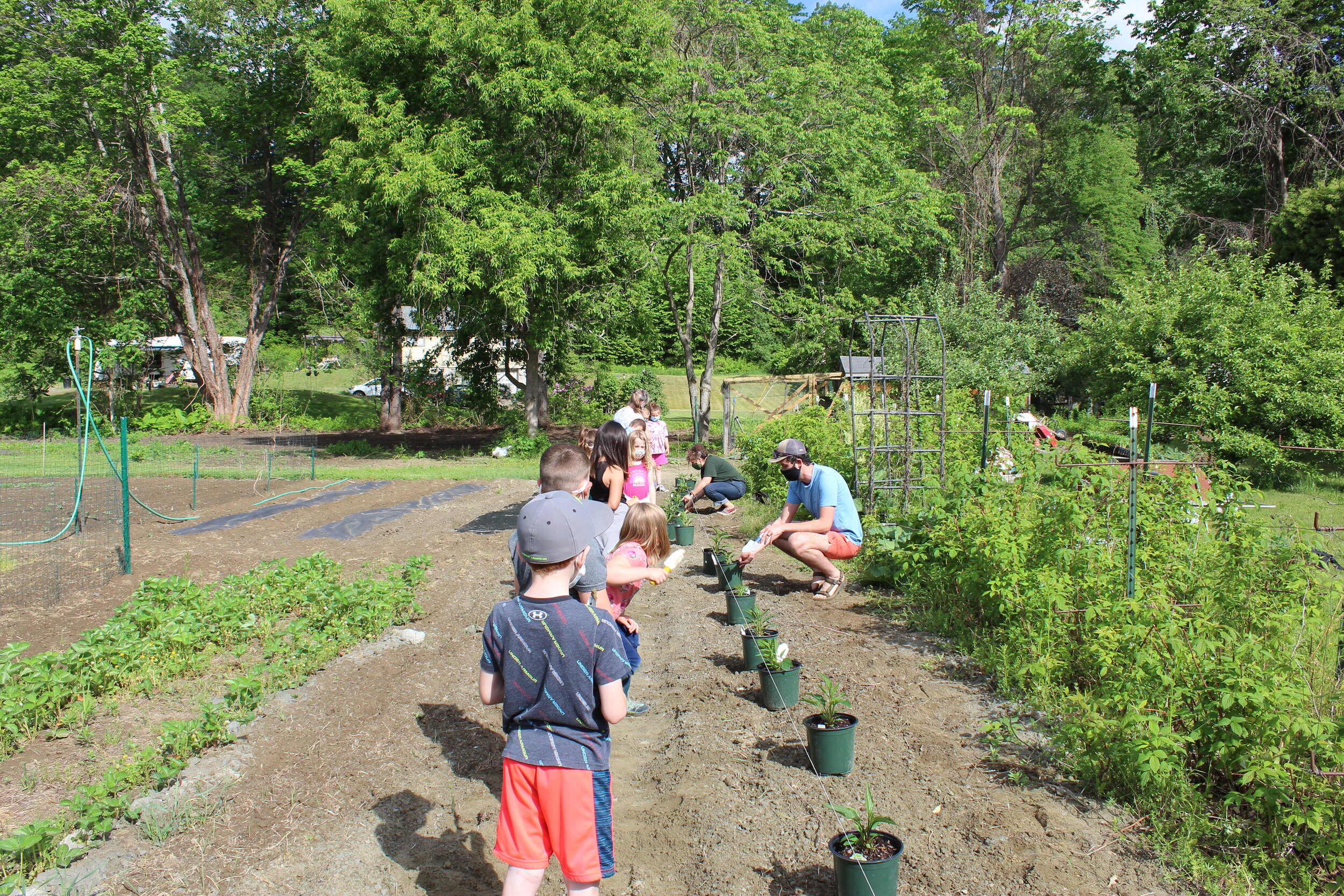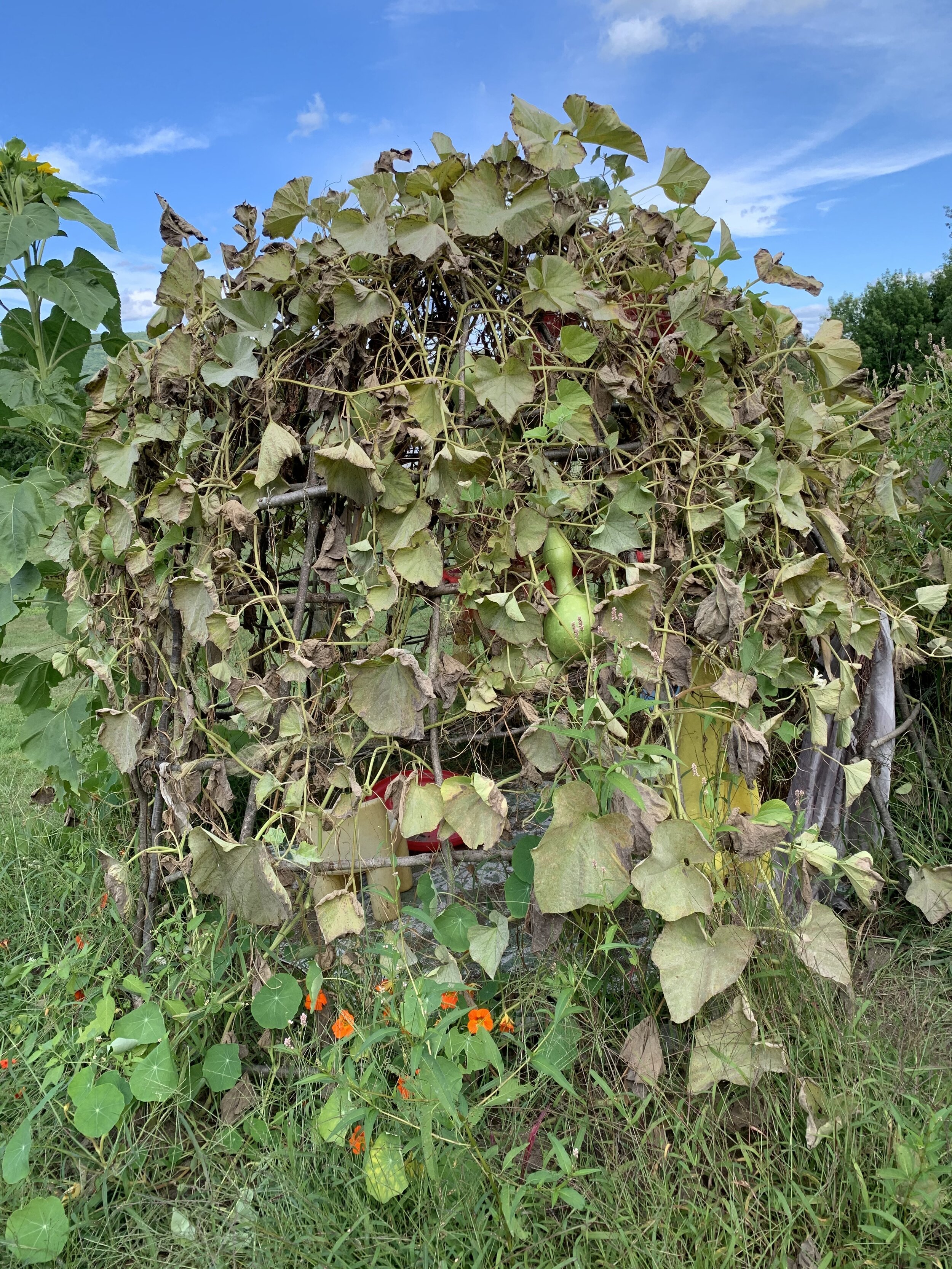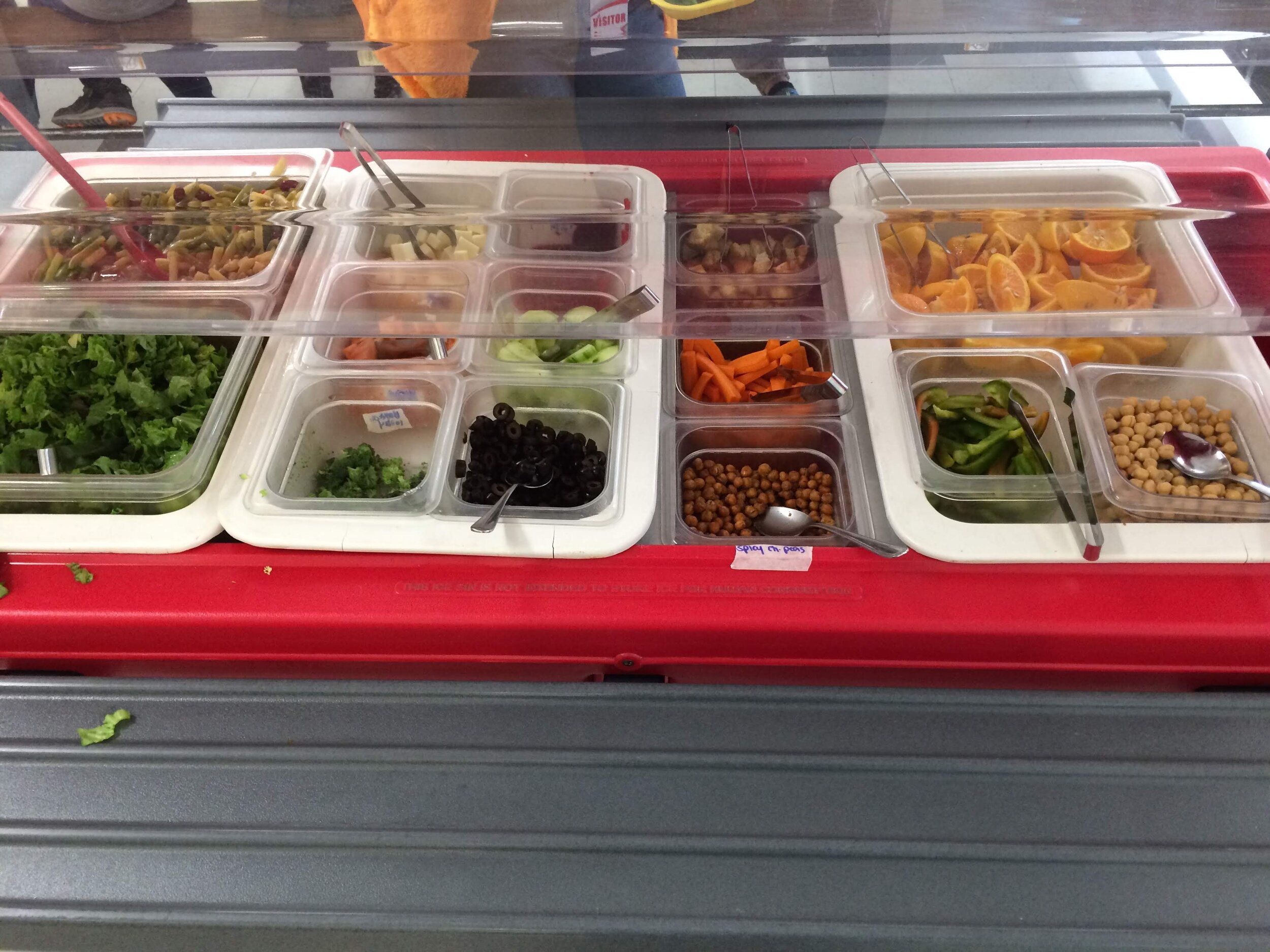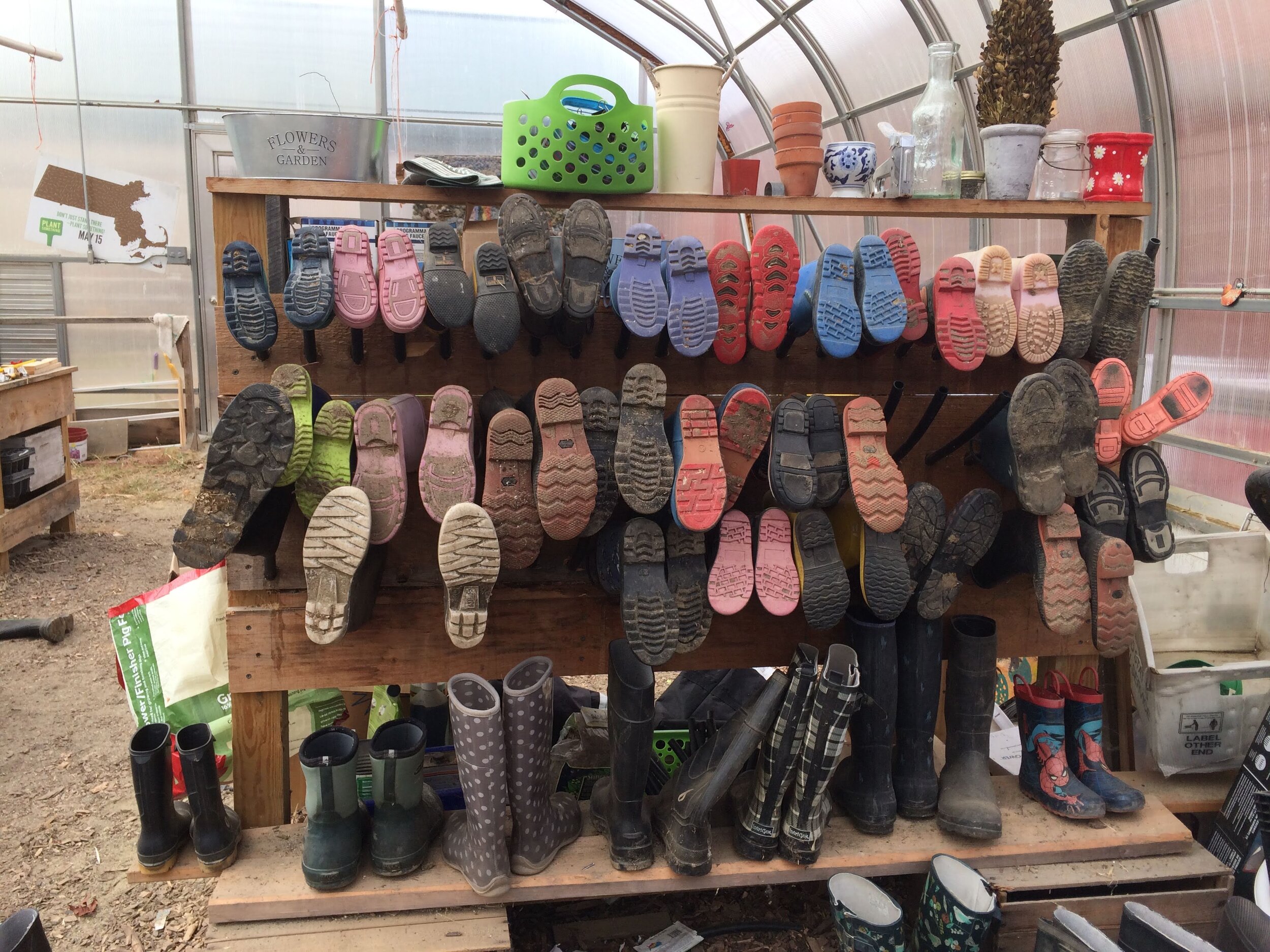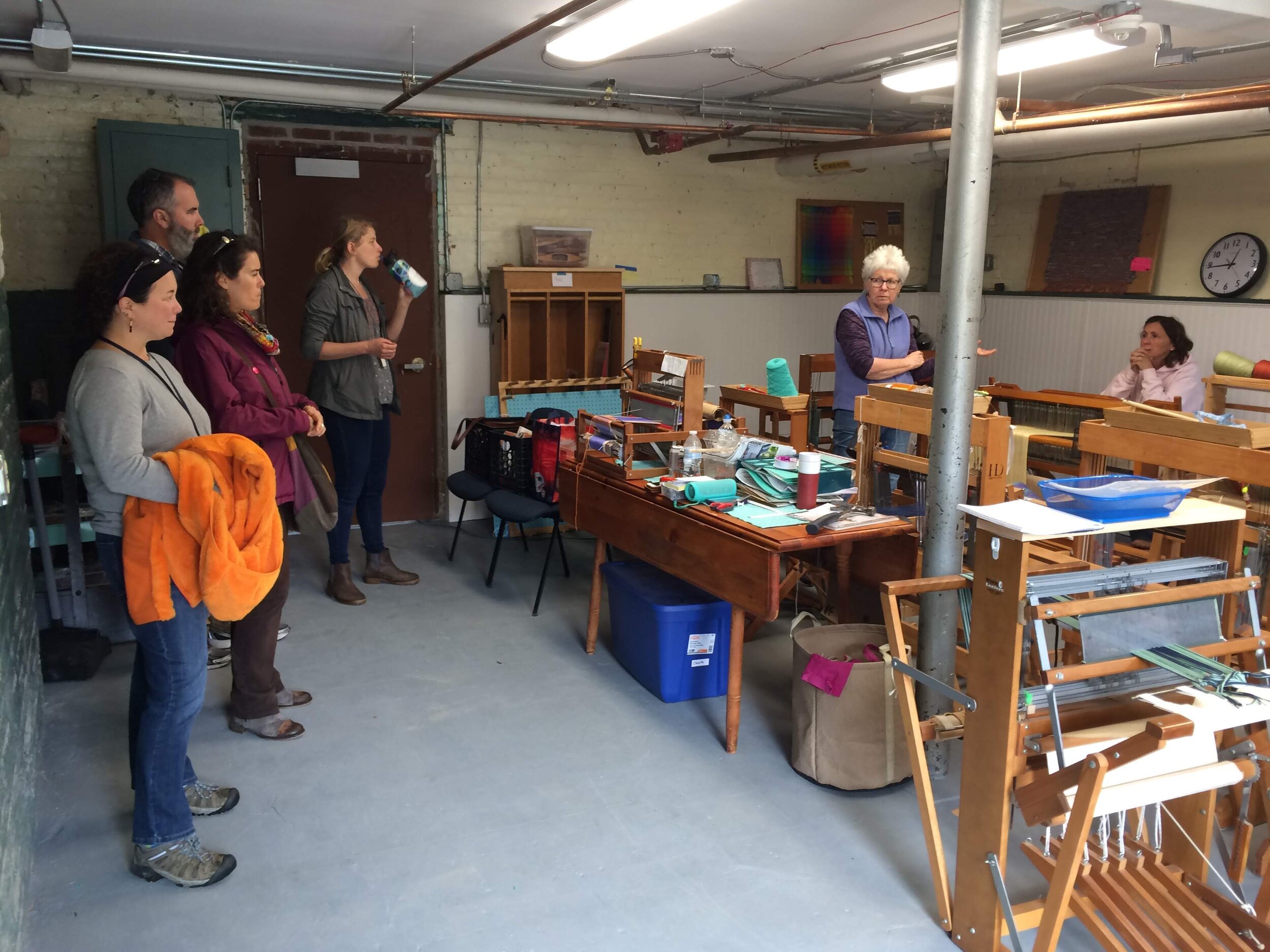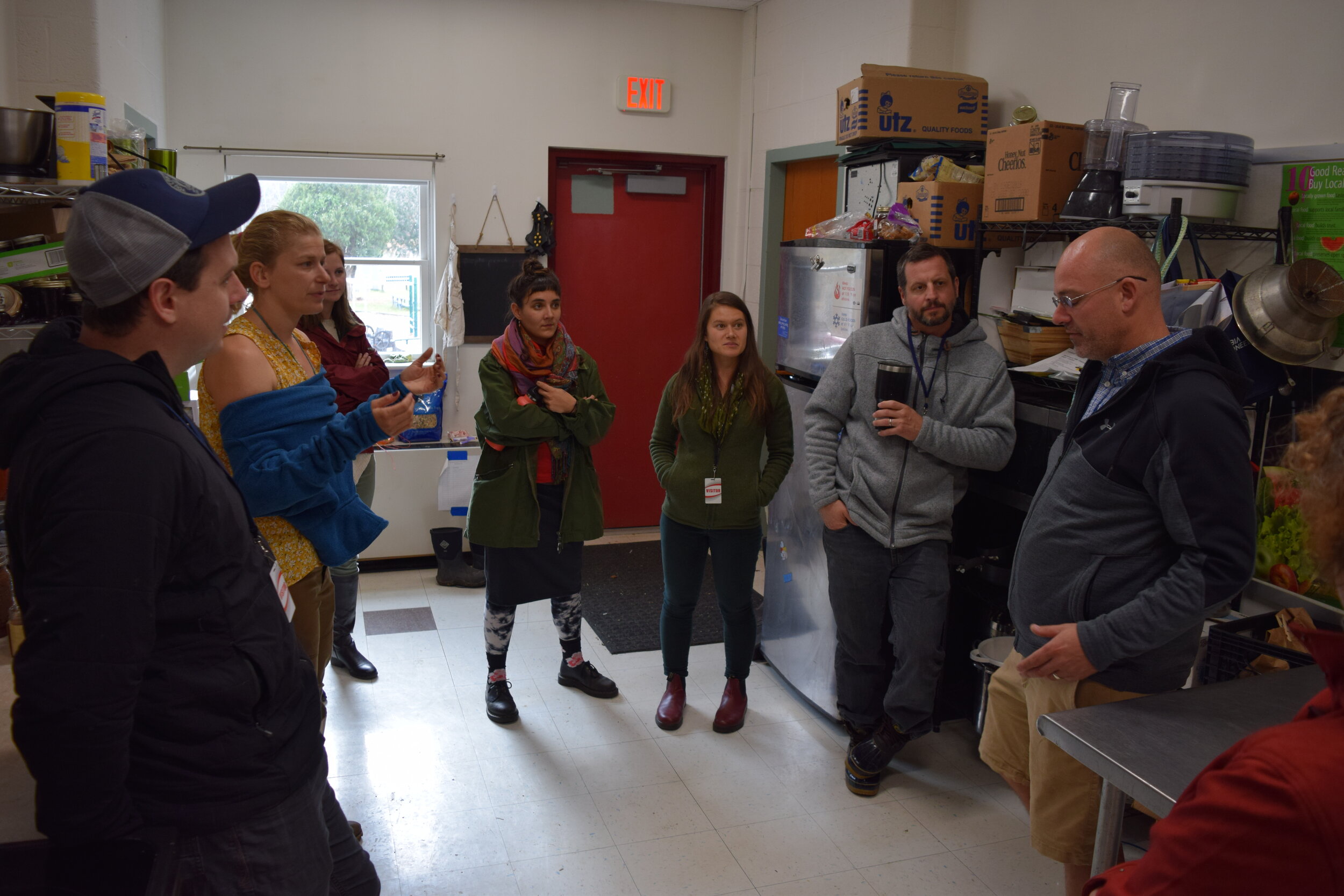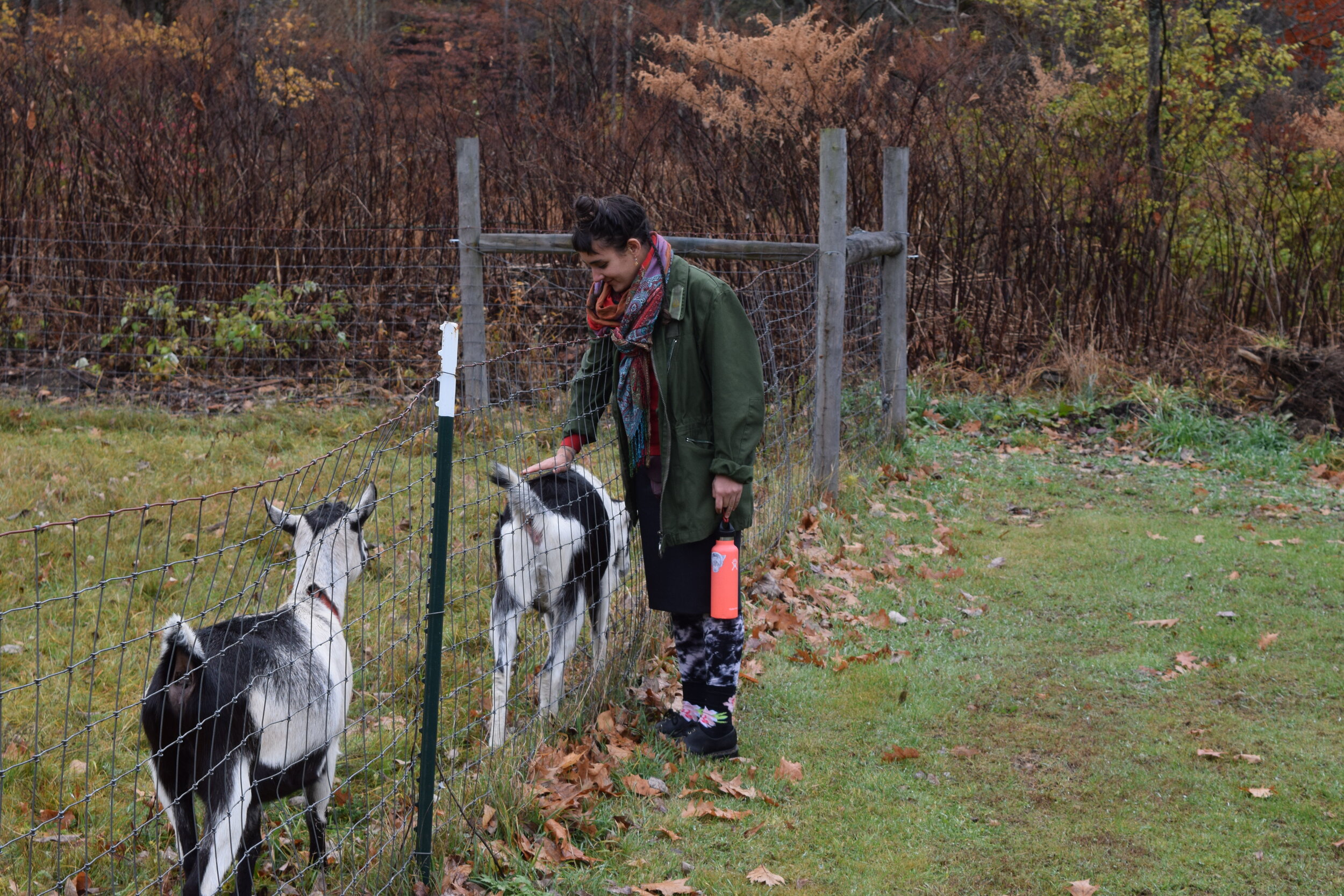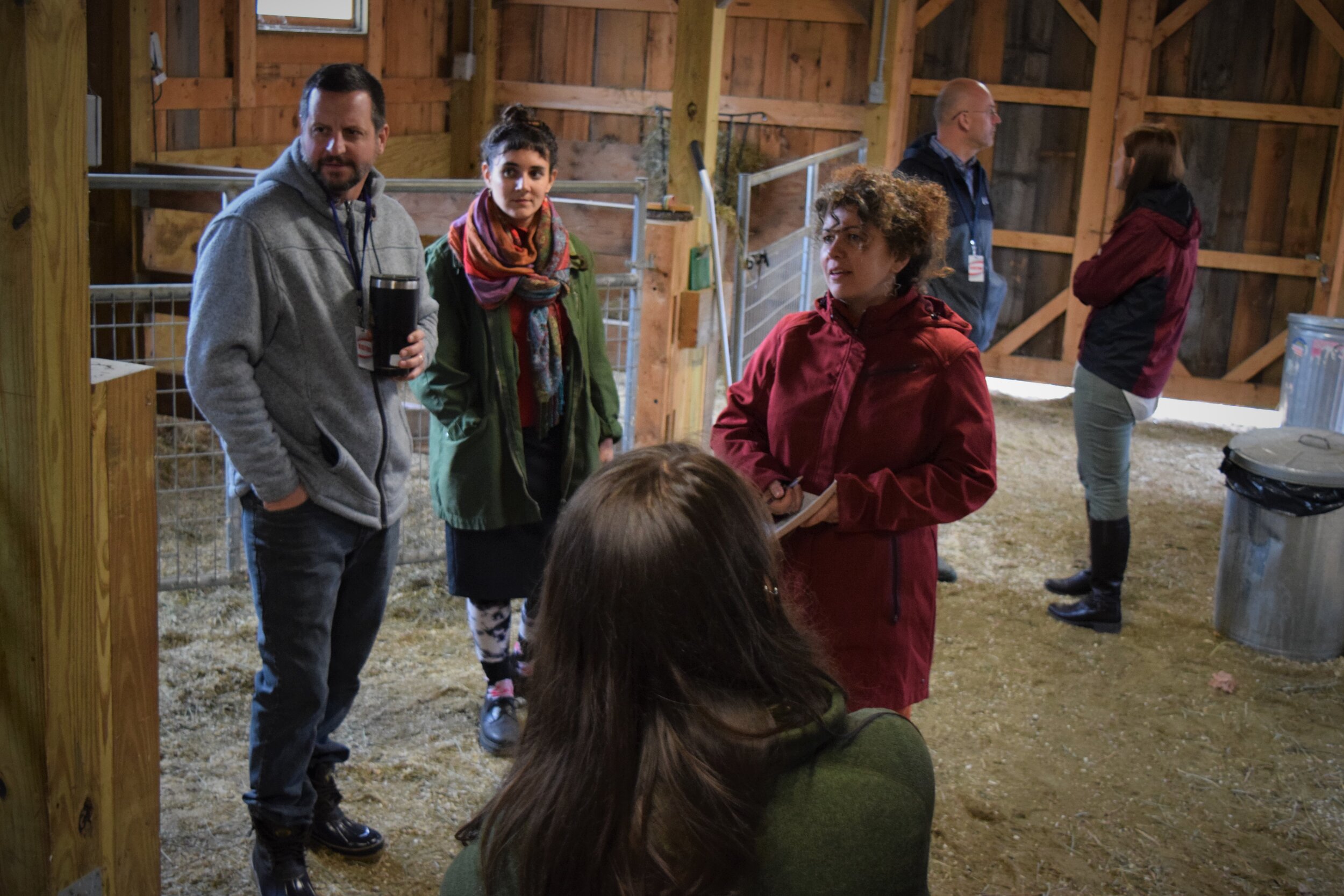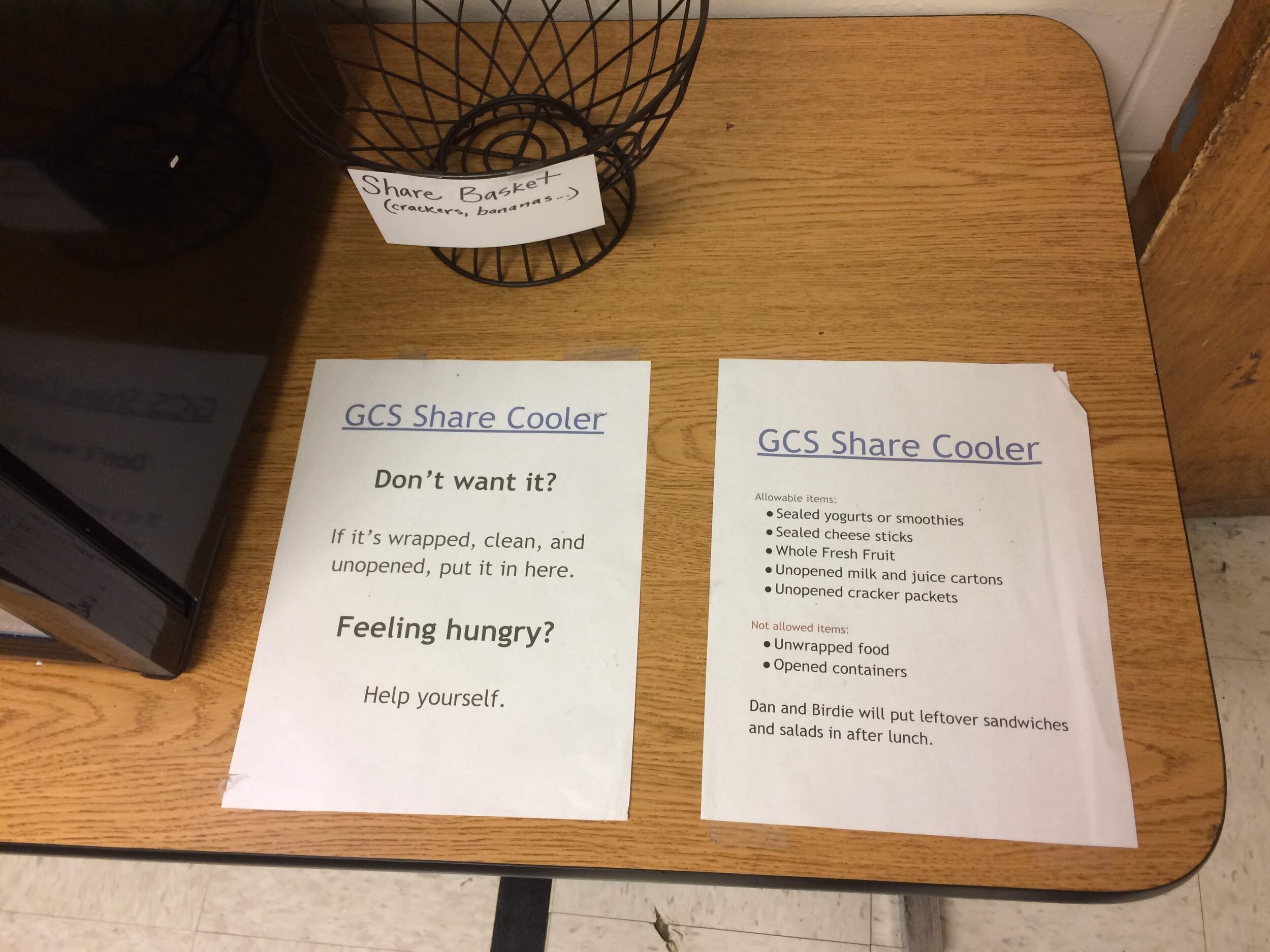The week before the start of the 2022-23 school year, Food Connects hosted a Celebration of Farm to School for school administrative teams and food service directors. We are so proud of the work being done by Farm to School teams at our member schools in Windham Central Supervisory Union, Windham Northeast Supervisory Union, and Windham Southeast School District, and we are grateful to the leaders who help make the work possible. At the event, we shared highlights from the 2021-22 school year at each member school, and we want to take a moment to share those highlights with a wider audience. Read on to hear the wonderful things happening in schools throughout the region!
Expanding Farm to School Throughout Windham County
Chroma Technology Supports Growth of Farm to School in the WNESU
Chroma Technology is growing Farm to School programs across the Windham Northeast Supervisory Union (WNESU) this school year by being the lead Farm to School donor for Food Connects, a Brattleboro-based non-profit serving schools in Windham County.
The Food Connects Farm to School program focuses on the “Three C’s” of Farm to School—classrooms, cafeterias, and communities. The generosity of Chroma Technology allows Food Connects to continue and strengthen its work in the WNESU. “We are incredibly grateful for the support that Chroma Technology is providing us this year,” says Sheila Humphreys, Food Connects Farm to School Coach. “Their dedication to Farm to School initiatives in our community ensures that more students can access locally grown food and can experience engaging Farm to School curriculum.”
“One of Chroma's core values is to be an active and caring member of our community,” says Newell Lessell, CEO of Chroma Technology. “Chroma supports Food Connects’s Farm to School program because helping develop healthy eating habits through education and access to nutritious, locally farmed food is good for children’s health, supports Vermont farmers, and builds healthy communities.”
So how do these funds impact schools and, more importantly, the students in the WNESU?
School Food
Bellows Falls Union High School students, and other students throughout the district, saw lots of local food throughout the summer through the Farm to School Cafe’s summer meal box initiative. This program provided students and their families with fresh, nutritious food throughout the summer, regardless of their financial circumstances. As part of Vermont Act 67 and the local food purchasing incentive, students will begin to see more local food on their trays this school year. The Food Connects Farm to School team is working hard to help school nutrition programs navigate this new incentive, in conjunction with offering Vermont grown and made foods through its Food Hub.
School Gardens
School gardens are an essential tool for hands-on and outdoor learning. Westminster Center School is a shining example of how school gardens can be done right. In May, the entire school participated in their Garden Day—a day where students plant seeds and seedlings in the school garden. As students harvest the final fruits of their labor, the garden continues to see an increase in infrastructure. Most notably, a frost-proof water spigot, a chicken coop, a small outdoor prep station, fire pits for outdoor cooking this winter, and blueberry bushes. Food Connects provided the school grant support, marketing materials, and hands-on support in the garden—and looks forward to supporting future garden projects, including the annual Farm and Field day later this month.
Farm to School Teams
Food Connects works with Farm to School teams throughout the region. This task is essential to help develop, guide, and implement Farm to School action plans, provide curriculum and grants support, and create materials and marketing for these programs. Central Elementary School formed a new Farm to School team this year that is participating in the Northeast Farm to School Institute. This school year, the school plans to expand its gardening and do more hands-on cooking in the classrooms, including monthly taste tests organized by the 2nd grade. Food Connects looks forward to working with Central’s Farm to School team to help bring in best practices for gardening and cooking with kids.
Grafton Elementary School is also deepening its Farm to School programming this year, with plans to add new grow labs, a hydroponic fish tank, and cooking tools, including a new oven to make it easier to teach cooking to students. Food Connects will continue to support these new initiatives through coaching and curriculum resources.
Back to School During COVID-19
Leaves are starting to change and there’s a hint of fall in the air, and during this most unusual year, students are learning and growing in schools and homes throughout Windham County. One of the benefits of working as a Farm to School team coach is that we get to experience the many diverse colors and flavors of back to school throughout the region. Here are a few from schools and districts across the region.
At schools throughout the Windham Southeast School District (WSESD), teachers and students are spending more time than ever in school gardens as they learn to maximize their time outside and use school gardens as outdoor learning spaces.
At Academy School, plans are being made to add a new pumpkin patch where students can grow pumpkins for the school’s annual pumpkin festival. Teachers are working together to see what’s possible in terms of building an onsite composting system as part of hands-on science for 6th grade, and Academy welcomes back Kathy Cassin for her second year in the role of Garden Coordinator. The gardens are looking great, and Food Connects’ summer garden coordinator Tara Gordon froze basil for fall cooking projects with students. The school is hoping to find funding this year to buy 2 or 3 mobile cooking carts to enable them to cook more with students.
Oak Grove School’s garden is bountiful this year with watermelons, tomatoes, acorn squash, Aronia berries, and kale. Normally the school community gathers together each October to celebrate the harvest with a community meal made by students using produce grown in the garden. Instead, this year teachers are getting creative and finding ways for students to enjoy the harvest during their in-person learning days throughout the fall. The first farm to school meeting of the year included conversations about the best recipes for kale chips and what to do with dehydrated tomatoes. Students will make signs for the garden to identify the variety of foods they’ve grown, and thanks to a grant from Blue Cross Blue Shield, garden coordinator Tara Gordon and pre-K teacher Jamie Champney plan to buy more kitchen equipment for the school’s cooking cart.
At Guilford Central School, Sarah Rosow, the Farm to School Coordinator, continues to work with students in the garden. She hopes to grow the garden and replace aging infrastructure—a grant was submitted for new raised beds and more supplies. The Guilford community is busy supporting the school by expanding the outdoor learning spaces. They are constructing two beautiful pole barns and work on their forest classrooms continues.
Twin Valley Elementary School is wrapping up a School to Farm project with NOFA-VT in which they built connections with Boyd Family Farm in Wilmington. The project was interrupted this spring by COVID-19 and will continue this fall with farm-fresh taste tests for students and a virtual tour of the farm filmed by NOFA staff to share with the school community.
The newly formed Farm to School Team at Winston Prouty’s Early Learning Center is excited to use produce from their garden to make homemade baby food this fall to feed to their youngest students. The first recipes use mashed squash from their plentiful butternut squash crop. The students thoroughly enjoyed playing in the gourd house throughout the summer, which became more and more magical as the gourds grew above their heads!
At Riverside Middle School the Farm to School team worked with students to collect pumpkins from the nearby church garden. The garden club will put Greenies Garden to bed this month and plan for next year. The last funds from a Vermont Agency of Agriculture, Food, and Markets (VAAFM) Nutrition Grant were used to buy two Jora brand composters for the school. Cliff Weyer, the Design and Technology teacher, is working with his Community Engineering class to assemble both units.
In the Windham Northeast Supervisory Union (WNESU), a new commercial veggie peeler at the high school kitchen means the food service team can process more local produce and include it in lunches! Harley Sterling, the School Nutrition Director, recently processed a large batch of potatoes from Westminster Center School’s (WCS) garden. WSC built a chicken coop over the summer and a flock of chickens has now officially moved in! Now, in addition to a bountiful garden, students can collect fresh eggs for classroom cooking projects and share them with the nutrition program, Farm to School Cafe.
At Newbrook Elementary School, the community harvested potatoes, squash, corn, and herbs from the garden. Some of the produce will go right into the school nutrition program while others will be saved for activities with students throughout the year. Teachers are getting ready for students to return to the classroom and thoughts have turned to the annual Farm and Field Day celebration. While it won’t look the same as in years past, there’s still hope that an adapted version can be held for the students to celebrate their school community.
Lessons Learned from Two Food Connects Learning Journeys
This past summer, Food Connects accompanied two Farm to School teams to the Northeast Farm to School Institute (NEFTSI) summer retreat. The retreat kicked off a year-long program where teams receive Farm to School program support and professional development as well as year-round coaching. Academy School from WSESD and a joint Grafton Elementary School and Westminster Center School team from WNESU spent three days at Shelburne Farms planning for the school year, learning more about Farm to School programming, and networking with other professionals from across New England and New York.
As the rush of back to school started to slow down, Food Connects Farm to School coaches, Conor and Sheila, reconnected with their NEFTSI teams, excited to kick off the new school year with a strong Farm to School focus. Still energized by the summer retreat, both teams wanted to make sure they stayed connected with the larger Farm to School community while also working to improve the programs in their own schools. Luckily for everyone, southeastern Vermont and western Massachusetts are home to a number of leaders in the Farm to School movement. At Sheila’s suggestion, Food Connects helped to coordinate personalized learning journeys for both teams to visit two robust Farm to School programs in the area.
Hawlemont Regional School
Hawlemont is a public pre-K through 6th-grade school in the rural community of Charlemont, MA. Hawlemont was struggling to stay open after school choice resulted in declining enrollment. In an effort to save the school, staff and local community members decided to reinvent the school with a “farm-flavored approach to learning.” The HAY (Hawlemont, Agriculture, and YOU) program is now in its fifth year, and during that time the school has doubled its enrollment and now has a waiting list.
Hawlemont received grant funding and leveraged community support to build their program, using grant funds and donated supplies and labor to build a greenhouse, barn, and garden beds, and teachers worked together to create an integrated farm and food curriculum. The result is a complete reimagining of the school, featuring successful collaborations with local farmers and community members where Hawlemont students engage in hands-on learning as they care for animals, nurture gardens, and develop new skills in a real farm setting.
Hawlemont added a new staff position, HAY teacher, and all students have HAY class each week for 30-45 minutes, just like music, art, and PE classes. Each class has daily barn chores and learns cooking, canning, and preserving, as well as beekeeping and running a weekly in-school farmers market where produce from the school garden and value-added products like pesto, canned tomatoes, salsa, jelly, and freshly baked pies all made by students are sold to parents and the community.
Hawlemont is working hard to get more local food into its independently run lunch program. In addition to purchasing from local farms, when budgetary constraints allow, all of the jelly used for PB & J’s for the entire school year comes from jelly students in the HAY program make from either grapes grown on the school property or from fruit picked by students from local farms.
Guilford Central School
For years, Guilford has worked hard at building its Farm to School program and they have been a partner of Food Connects since 2014. In her second year, Sarah Rosow is the school’s Farm to School Coordinator. As both teams saw during their visits, Farm to School programming is strongest when there is a consistent collaboration between a dedicated coordinator and a team of champions from throughout the school. At Guilford, Sarah works with all the teachers to find time to incorporate Farm to School lessons into their existing curriculum as well as additional enrichment activities. She works with Dan, the school’s food service director, to integrate taste tests and Harvest of the Month items into the menu. Through this collaboration, Sarah is able to stay focused on Farm to School and keep projects moving forward, while the team of faculty and staff ensure that there remains a strong culture of Farm to School throughout the building.
So what does Farm to School at Guilford look like for the students? Getting dirty in the gardens, cooking up delicious Harvest of the Month recipes in the Farm to School room, and working in their classrooms to design and make market-ready products for the school gardens. From pre-K all the way to the 6th grade, students engage in Farm to School through classroom learning and extension activities.
Farm to School also reaches the cafeteria, where Chef Dan is an active member on the Farm to School team and works with Food Connects to increase local purchasing and track trends over time. This past Thanksgiving, Dan put on a feast for the entire community that highlighted many local items. Now, he’s working with Sarah to highlight many of the dishes students make in the Farm to School classroom by incorporating them into his lunch menus.
The Guilford Farm to School program made a particularly large splash this past month when they hosted their inaugural Holiday Market, where local vendors joined students in selling different crafts. Of the money made by each classroom by selling their items, half is being donated to a charity of their choosing and the other half is going to be reinvested in Farm to School programming for the students.
After two inspiring days of learning and sharing, there were definitely some themes the teams walked away with when thinking about program longevity and sustainability. In both schools, there was a balance between team collaboration and a main coordinator. Oftentimes, Farm to School programs grow their roots in a school thanks to the devoted efforts of a single champion. While that helps keep the momentum going, it’s important to quickly build a diverse team of support. Otherwise, when that champion leaves or becomes too busy themselves, all the work they did can get lost in the shuffle.
The community support both schools have is also one of their greatest strengths. In Hawlemont, community members rallied to save their school, build a barn, and help care for the animals. Guilford partners with local farmers to source beef for lunches, handle their food scraps, and support events like the Holiday Market. In addition to gathering a diverse team of school staff, another first step for a fledgling Farm to School program should be to think about what makes their community special and ways to involve community members as much as possible.
Lastly, both programs are actively involved in parenting their financial sustainability. Grants and fundraising are inevitably a big part of Farm to School. Having dedicated coordinators to work on larger projects and support from organizations like Food Connects goes a long way in supplementing school budgets. Each program has its own needs, but having a variety of funding sources for staff and materials is key in creating robust programs that carry on for years.
Cafeterias Unknown: Central Elementary
Shortly after I started working at Food Connects last month, I saw “Cafeteria’s Unknown” pop-up on my list of projects. After a quick explanation, I was drawn right into the project. Eat a meal at each of the over 25 schools Food Connects works with? Not only could I share all the amazing things taking place in cafeterias with our community, but it was a great way for me to get to know all the schools I’m working with.
Breakfast after the Bell, salad bars, Universal Meals, new menu items, local ingredients—there’s a lot happening in our schools’ cafeterias. I’m excited to get the inside scoop on it all while also trying some delicious food.
-Conor
A student and I weigh our options at the new salad bar Harley built over the summer.
Visit any of the cafeterias in the Windham Northeast Supervisory Union and you’ll notice a lot of changes. Last year, Harley Sterling took over as the district’s Food Service Director and transitioned the district to independently operated cafeterias. It’s Harley’s goal to get more local food on the menu, better support his staff, and increase meal quality district-wide.
Earlier this month, we visited Central Elementary in Bellows Falls. Sheila, Food Connects’ Farm to School Program Coordinator, made the trip with me to share a meal and introduce me to Harley. While he was tied-up at another school, we snuck into the line in between 3rd and 2nd grade. We got our trays and headed for the entrees—chicken patties and roasted potatoes. At the salad bar, there was a wide selection of leafy greens, fresh veggies, and protein-packed sides.
With loaded trays, Sheila and I grabbed our seats in the middle of a table and immediately started talking food with our new 3rd grade friends. Owen and a few of his friends shared with us their favorite foods—there were many chicken patty fans. Owen was a strong proponent of Taco Day. Just as we were getting into the finer details of the salad bar, Harley arrived.
Luckily, Sheila remembered to snap a photo of my lunch before I dug in. It looks like I’ll need to work on my presentation during my next lunch photo shoot.
Harley spends most of his time in the Central Elementary cafeteria. As we ate, he explained the balance he’s trying to strike between filling the menu with new, healthier foods and making sure kids still eat lunch. My lunch tray stood as the perfect example: chicken patty may not be the healthiest protein option there is, but it’s a familiar item that most kids like. From there, students can start trying new items at their own pace. My salad was topped with fresh, crisp red peppers and tofu. The Asian rice salad was new to me and delicious as well. Harley and his team have been working hard to build the trust with their students so that participation stays high as they introduce new items in the cafeteria.
Harley and Erica, the School Nutrition Site Manager, holding up a banner Sheila and I dropped off.
And, it looks like it’s working! As we spoke, a girl next to us was eating her way through a small pile of peppers. Harley explained that many foods we may not think of as new or exotic are foreign to some students. “Tacos,” Harley said, “are one of those foods that have required a reintroduction for some students.” At the mention of his favorite lunch, Owen’s eyes lit up and he reminds me that tacos are his favorite.
Before we can dive back into our conversation, it’s time for a quick birthday celebration and then lunch is over—I forgot how short school lunch is!
Bellows Falls Expands Farm to School Programming
This past September, Windham Northeast Supervisory Union kicked off a new school meal program: the Farm to School Cafe. Led by Food Service Director Harley Sterling, the Farm to School Cafe model is thriving in Bellows Falls and the surrounding towns, including Westminster, Grafton, Athens, and Saxtons River. While breakfast and lunch menus still look familiar to students and families, they now feature a variety of locally grown products and the large majority of meals are prepared from scratch. Students at these schools are enjoying things like locally raised beef, potatoes, carrots, corn, tortillas, beans, dairy, maple syrup, and more!
According to Sterling, this new model has been well received by students and faculty alike.
“We get excited every time we see a new face come through the lunch line or we can get someone to try something for the first time and they end up loving it. Just knowing that the kids in these communities have access to the very best food every day in school—there is no better feeling. We’re seeing steady gains in student participation, especially at the schools where we’ve made the biggest changes. We had pretty terrific programs at Saxtons River, Grafton, and Westminster. At the Bellows Falls schools, we’ve seen about a 5% bump already this first year. We have also seen sales to adults triple. We feel like this is a really great leading measure of how good our meals are since adults have the choice to buy whatever they want for lunch. The fact that they are choosing to spend their money on the same food we serve to students speaks to the quality that our school chefs are serving up.”
Administrators within the school district have also welcomed these positive cafeteria changes and intend to build on them wherever possible. In fact, the district’s wellness committee, led by assistant superintendent Lynn Carey, just received a $15,000 grant from the Vermont Agency of Agriculture Food & Markets to support Farm to School initiatives at Bellows Falls Middle School. The school is excited to use this funding for updating kitchen equipment, re-building garden beds, re-envisioning cafeteria space, and hosting a community meal & garden tour this summer.
The team, which also includes Art teacher, MaryLou Massouco, Family & Consumer Sciences teacher, Jane Mitchell, Finance Specialist, Shawna Coutu, and Food Service Director, Harley Sterling, has set some lofty farm to schools goals, including new projects in the classroom, cafeteria, and community. Carey says, “I am proud of the improvements accomplished since we brought our food services in-house with Harley.” She looks forward to coupling these changes with efforts in the classroom and community.
Other schools in the district are also eager to engage students in Farm to School education. Westminster Center School and Grafton Elementary School were recently accepted to attend the Northeast Farm to School Institute, a year-long professional development opportunity for twelve school teams from New England and New York, hosted by Vermont FEED. The institute kicks off this June at Shelburne Farms and includes three full days of action planning, professional learning, and networking with like-minded individuals from across the northeast. Grafton Elementary principal, Liz Harty, and Westminster Center School librarian, Mandy Walsh, are excited to use this opportunity as a way to partner more intentionally and bring new and engaging activities to their students. Harty says, “We are excited to expand on what we already have in place and provide students with more authentic learning opportunities."
Windham Northeast is part of a larger movement in Vermont to reconnect students with their food. The local food system is vibrant and the schools are stepping up to further strengthen it. In order to create resilient communities in southern Vermont, educators are beginning to talk with students about where their food comes from and engage them in hands-on learning to reinforce Farm to School concepts. Classrooms are visiting local farms, working in school gardens, cooking with teachers, and connecting with their environment in new and exciting ways. The region partners with a local farm to school organization, Food Connects, an entrepreneurial non-profit that delivers locally produced food as well as educational and consulting services aimed at transforming local food systems.




